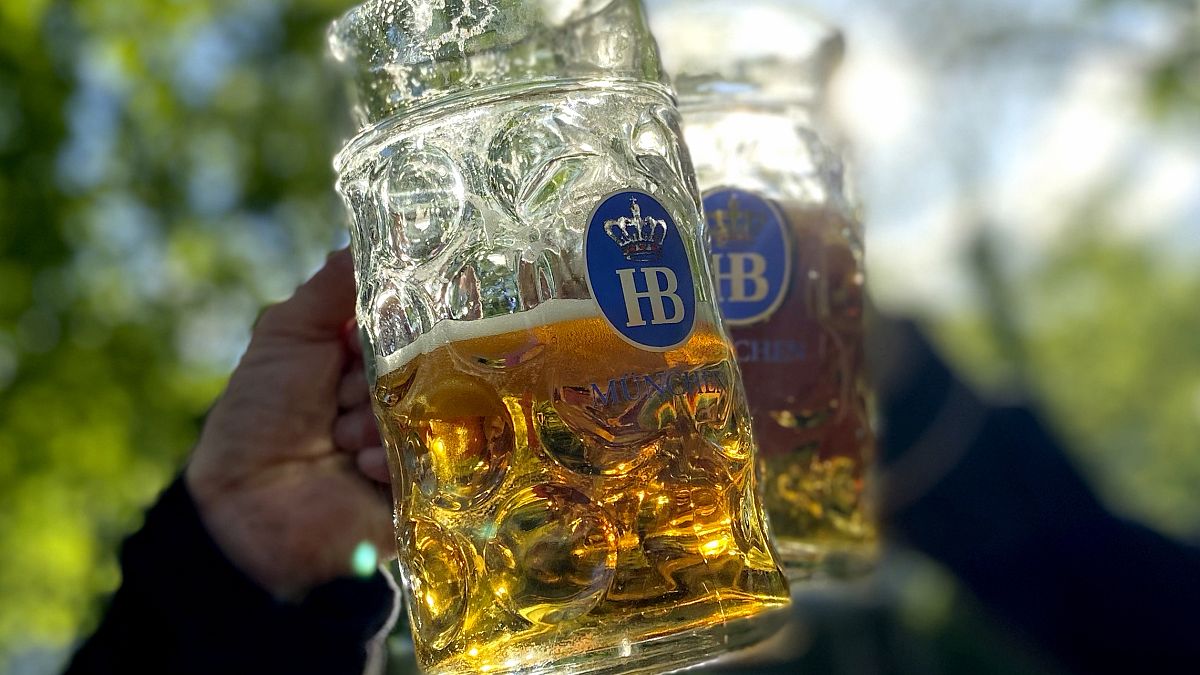Statistics from the National Breweries Association show that there has been a steady decline in beer sales since 2015.
The Oktoberfest beer festival is in full swing in Germany, but one thing might be missing in some people’s mugs and bottles: alcohol.
Revellers in the country are increasingly seeking out an alternative to booze with a similar taste but without the risk of a hangover.
The amount of non-alcoholic beer produced for sale more than doubled in ten years, from 2013 to 2023, according to German Federal Statistical Office data.
The Velvet bar in the German capital has been offering alcohol-free cocktails since it opened seven years ago.
Bartender Ruben Neideck says there’s been a growing number of those asking for non-alcoholic drinks and more discussion about them in the industry.
“In bar publications, (you can now find) non-alcoholic products and how to create non-alcoholic drinks. So there’s definitely an increase in that. And among bartenders, you would boo (your peers) for making non-alcoholic drinks. I think it’s fun and a challenge,” Neideck said.
One brewery in Berlin told Euronews that its non-alcoholic beer is one of its most in-demand bottled brews, while in Munich — the home of Oktoberfest — an alcohol-free pop-up beer garden opened this year.
The biggest drop in 2020 when the pandemic forced bars to close down, but numbers haven’t recovered since.
However, the statistics also show a steady consumption of alcohol-free beer with an increase from 2015 to 2023.
WHO: ‘No safe amount of alcohol’
The trend comes amid louder alarm bells over the risks of booze.
Last year, the World Health Organization said there was no safe amount of alcohol to drink. It says the substance can cause at least seven types of cancer.
Neideck said concerns over people’s well-being seem to be translating into consumer choices.
“I think people are more aware of the health impact it might have, and also, a bar ages with its patrons,” he explained.
“So I think that as we as a bar grow older, our patrons are a little bit older on average, so there is a bit more of a responsible consumption of alcohol.”

